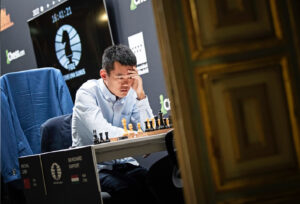Henri Rousseau’s The Sleeping Gypsy (1897), housed in the Museum of Modern Art (MoMA) in New York City, stands as one of the most enigmatic and celebrated works of modern art. A self-taught painter who never formally studied the art of his time, Rousseau carved his own path into history with his distinctive style, blending elements of the real and the surreal. The Sleeping Gypsy exemplifies his mastery, offering viewers a mesmerizing tableau that combines a dreamlike atmosphere, symbolic ambiguity, and a timeless sense of wonder.
Henri Rousseau, often nicknamed “Le Douanier” (The Customs Officer), was born in 1844 in Laval, France. Unlike many of his contemporaries, Rousseau did not come from an artistic background. He worked as a toll collector before dedicating himself to painting full-time at the age of 41. Despite his late start and lack of formal training, Rousseau developed a highly individual style, often categorized as “naïve” or “primitive.” However, these terms, while reflective of his departure from academic norms, fail to capture the depth and sophistication of his compositions.
Rousseau’s work was initially met with ridicule by critics who dismissed it as amateurish. Yet, he found admirers in avant-garde circles, including Pablo Picasso and Guillaume Apollinaire, who recognized his unique vision. The Sleeping Gypsy is a testament to Rousseau’s ability to transcend conventions and create a world entirely his own.
The Sleeping Gypsy depicts a mysterious nocturnal scene: a sleeping figure, dressed in flowing robes, lies on a sandy desert under a starlit sky. Beside the figure rests a lute and a clay jar, suggesting a sense of solitude and simplicity. Towering above the gypsy is a lion, its gaze fixed on the sleeper. The lion appears almost cautious, its stance more contemplative than predatory.
The composition’s elements are striking in their simplicity:
•The Figure: The sleeping gypsy, with her striped robes and serene posture, conveys a sense of peace and vulnerability.
•The Lion: The lion’s presence is both threatening and protective, adding a layer of ambiguity to the narrative.
•The Setting: The barren desert, illuminated by a pale moon, creates an otherworldly atmosphere. The smooth, geometric shapes of the dunes and the serene quality of the night sky contribute to the painting’s dreamlike quality.
Rousseau’s style is characterized by its flat planes, simplified forms, and meticulous attention to detail. His use of color is particularly noteworthy in The Sleeping Gypsy, where muted earth tones contrast with the deep blues of the night sky. The painting’s lack of linear perspective and its almost childlike quality invite viewers to interpret the scene on an emotional rather than a rational level.
The Sleeping Gypsy has often been interpreted as a visual representation of the dream state. The juxtaposition of the tranquil gypsy and the lion suggests a tension between vulnerability and latent danger, echoing the unpredictable nature of dreams. The surreal quality of the scene aligns Rousseau with later movements like Surrealism, which sought to explore the subconscious mind.
The painting’s symbolic elements invite multiple interpretations:
•The Gypsy: The sleeping figure may symbolize human fragility and the power of imagination, as she appears unbothered by the lion’s presence.
•The Lion: Often seen as a symbol of strength or fear, the lion’s contemplative stance challenges its traditional depiction as a predator. It could represent the untamed forces of nature or the subconscious mind watching over the dreamer.
•The Desert: The barren landscape may signify isolation, introspection, or the vast unknown.
•The Lute and Jar: These objects suggest a narrative of travel and simplicity, perhaps hinting at the gypsy’s life journey.
What makes The Sleeping Gypsy so compelling is its refusal to provide clear answers. Is the lion protecting the gypsy, or is it poised to attack? Does the scene depict reality, a dream, or a myth? Rousseau leaves these questions open, allowing viewers to project their interpretations onto the work.
When The Sleeping Gypsy was first exhibited in 1897, it received little recognition. Critics, accustomed to the refined techniques of academic painting, dismissed Rousseau’s work as unsophisticated. However, Rousseau’s vision found champions among the avant-garde. Pablo Picasso reportedly purchased one of Rousseau’s paintings for a modest sum, recognizing the painter’s innovative approach.
By the mid-20th century, Rousseau’s work had gained widespread acclaim, and The Sleeping Gypsy was celebrated as a masterpiece of modern art. Its dreamlike quality resonated with Surrealists like Salvador Dalí and André Breton, who saw Rousseau as a precursor to their movement.
Today, the painting is one of the highlights of the Museum of Modern Art’s collection, admired for its timeless appeal and universal themes.
Henri Rousseau’s unique style and imaginative vision have had a lasting impact on modern art. His ability to blend realism with surrealism paved the way for later movements, including Surrealism and Naïve Art. Artists like Frida Kahlo and Marc Chagall drew inspiration from Rousseau’s use of symbolism and his dreamlike compositions.
The Sleeping Gypsy, in particular, has inspired countless interpretations and adaptations in various media, from literature to film. Its mysterious narrative and universal themes continue to resonate with audiences, affirming Rousseau’s place as a pioneer of modern art.
The themes explored in The Sleeping Gypsy—vulnerability, mystery, and the subconscious—remain relevant today. In a world increasingly dominated by technology and rationality, Rousseau’s work reminds us of the power of imagination and the importance of exploring the unknown.
Unlike the complex techniques of academic painting, Rousseau’s straightforward style makes his work accessible to a wide audience. The Sleeping Gypsy speaks to people of all ages and backgrounds, offering an open invitation to interpret its mysteries.
The painting is also a valuable educational tool, illustrating how art can transcend traditional boundaries. It challenges students and art enthusiasts to think critically about symbolism, narrative, and the role of the artist in society.
Henri Rousseau’s The Sleeping Gypsy is more than a painting—it’s an invitation to dream. Through its mysterious imagery, symbolic depth, and timeless appeal, the work continues to captivate viewers and inspire artists over a century after its creation. Rousseau’s ability to blend reality and imagination, simplicity and complexity, makes The Sleeping Gypsy a cornerstone of modern art.
In a world that often demands concrete answers, Rousseau’s masterpiece reminds us of the beauty of ambiguity. Like the gypsy in her peaceful slumber, we are left to wander the vast landscapes of our own imagination, watched over by forces both familiar and unknown. The Sleeping Gypsy is not just a window into Rousseau’s world—it’s a reflection of our own.
No comments yet.








